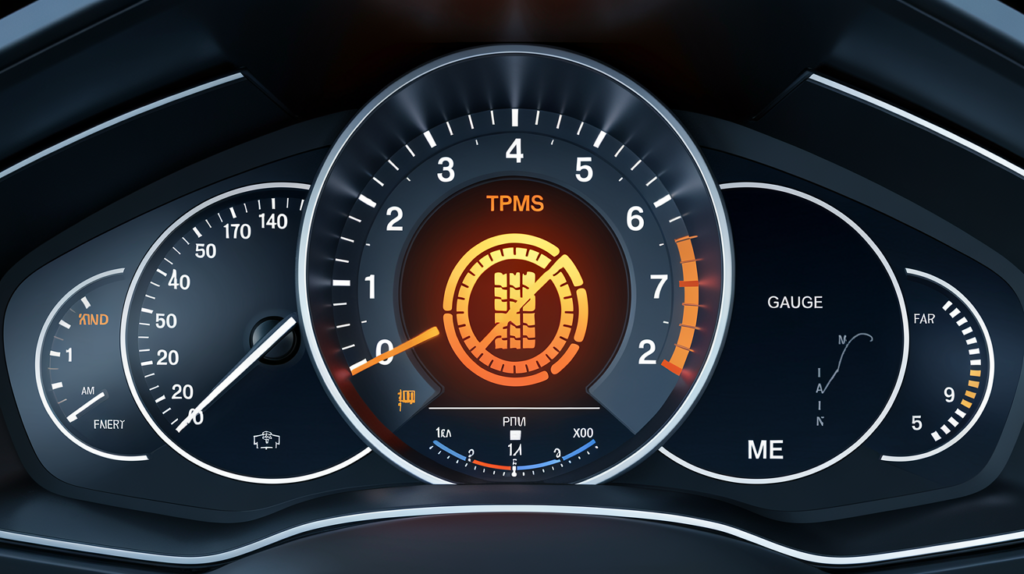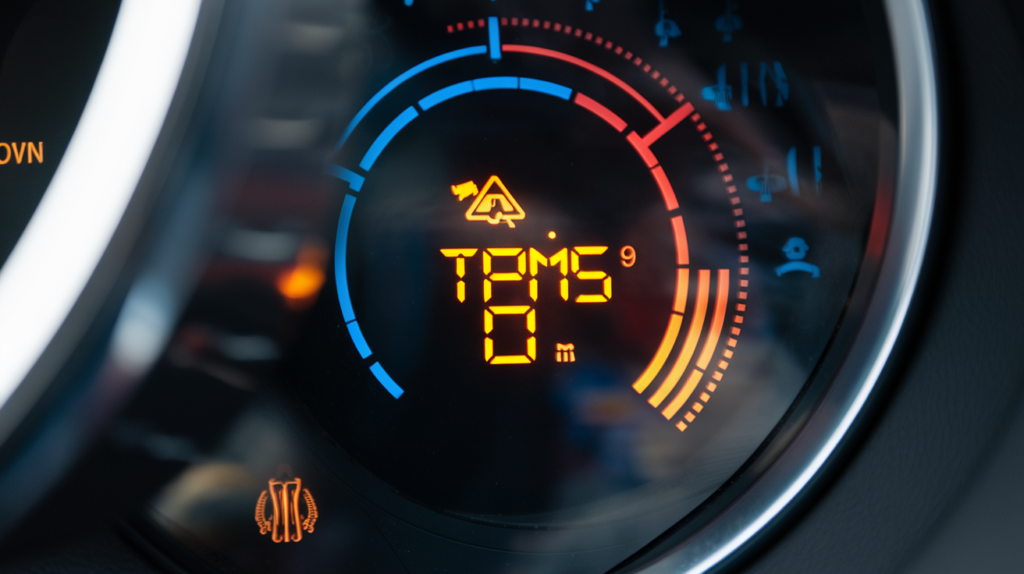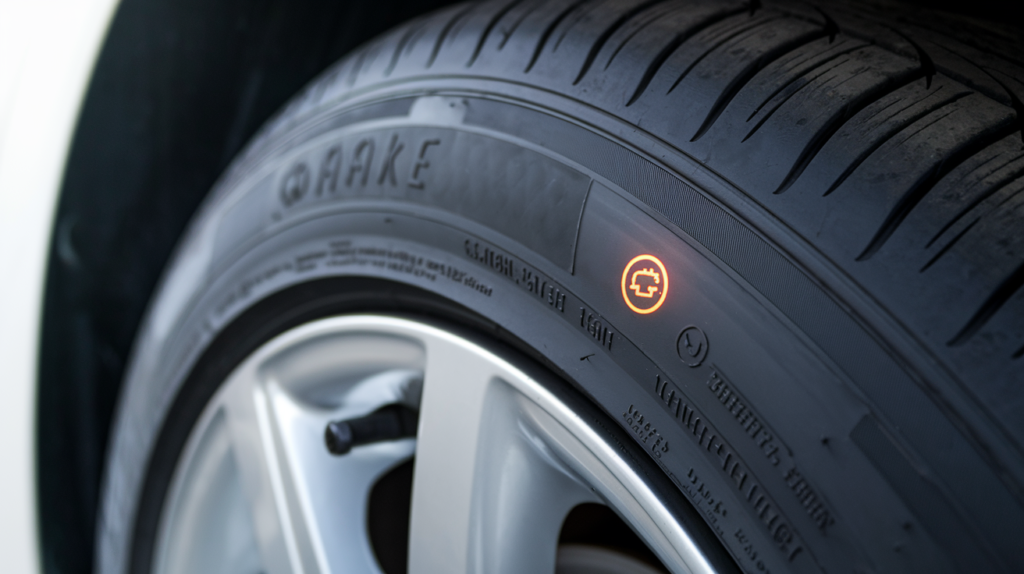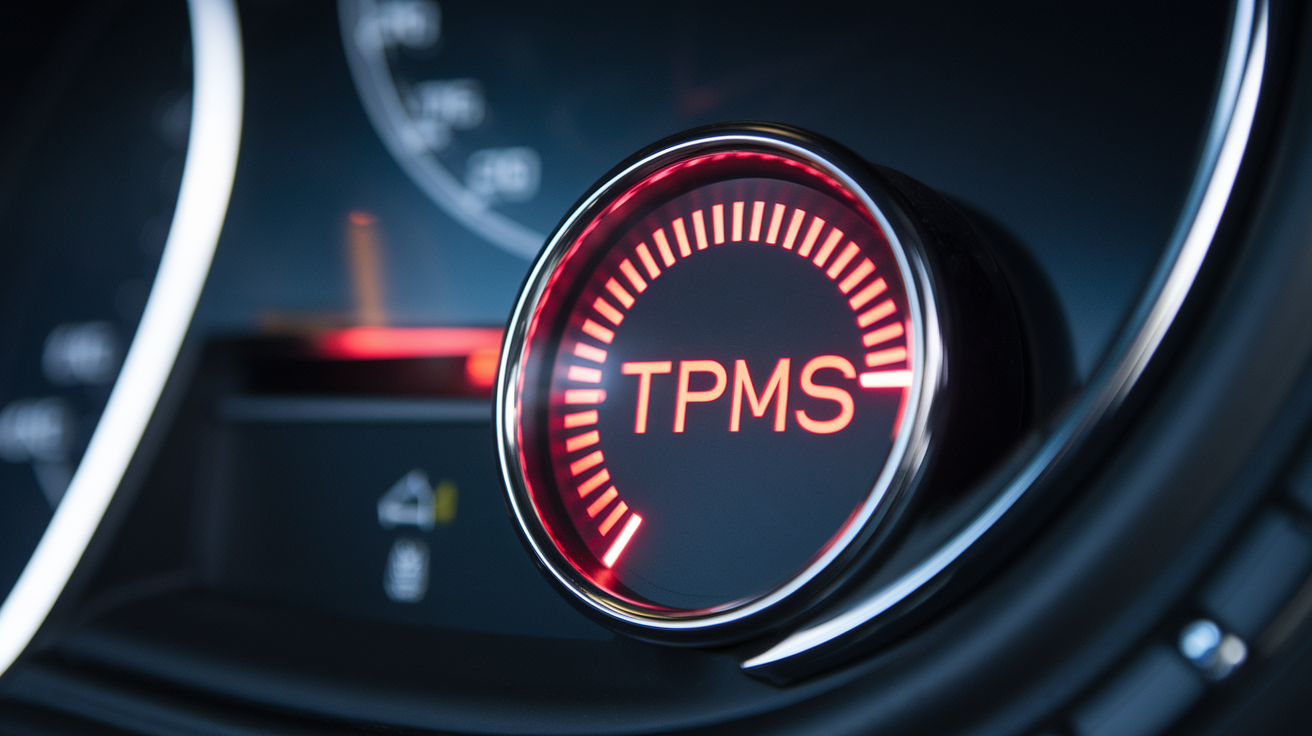Introduction
A TPMS light is a small light on the auto’s console. A Tire Pressure Monitoring system provides drivers with a human-readable visual representation of loose threads. The TPMS system informs you whether your tyres have an appropriate amount of air in them or not. The TPMS light indicates that one of your tyres has a pressure below the recommended one. It is serious since it endangers the car’s performance.
One of the leading causes why TPMS light is important is that it assists in keeping you safe. The condition of your automobiles will be in good standing when you service in TPMS. As a result, to avoid low air pressure low air pressure, you would be less likely to lose control of the car and less likely to have a flat tyre. The TPMS light is a signal that tells you the status of your tyres and lets you take the necessary action before the problem develops.
How Does the TPMS Light Work?
The TPMS light operates by sensors placed in the tyre. These sensors measure the amount of air pressure in each tyre. If the unit. If the air pressure is low in the vehicle’s onboard diagnostic system, the onboard driver needs to fix the deflated tyre.
What to Do When the TPMS Light Comes On
When the TPMS light is on, the first thing to do is check the amount of air in your tires. To measure the tyre air, use a tyre pressure gauge. If the air pressure is below the required level, add air until it reaches the correct level. The recommended tire pressure is found in your car’s owner’s manual and on the sticker on the driver’s door.

Common Reasons for the TPMS Light to Come On
1. Low Tire Pressure
The TPMS light usually goes unusually because of low tyre pressure. It may happen if you have not checked the air in your tyres for a while or if they have a small leak.
2. Temperature Changes
The pressure of the tyre can also change when the temperature varies. The cooler air inside tyres also contracts,, leading to a drop in tyre pressure. Such a condition might cause a condition might cause the TPMS light to come on.
3. New Tyres
You may find the TPMS light on if you have replaced the tyres if you have replaced the tyres if you have replaced the tyres. It can happen when the sensors are not reset after the new tyres are installed.
How to Reset the TPMS Light
Once you repair the tyre pressure, the TPMS light should be off. If it doesn’t, your tyres will have to be set. The TPMS light can be reset by following your car’s owner’s manual instructions. In some cases, you may need a unique tool or a mechanic.
TPMS Light and Safety
The TPMS light is a vital safety measure in any vehicle. It not only reminds you to pay attention to your tyres but also significantly reduces the chances of accidents. Proper tyre maintenance is crucial for ensuring the car’s function and road safety. Ensure that you turn on the TPMS light and take the necessary steps when it is on.
TPMS Light and Fuel Efficiency
Additionally, tyre pressure is a must for good fuel efficiency. Underinflated tyres negatively affect fuel economy, requiring the vehicle to work harder to move. Even worse, increased consumption means higher gas station costs. Run your tyres at the recommended pressure to help you save some cash and be more environmentally friendly.
TPMS Light and Tire Life
Maintaining the correct tyre pressure can also extend the life of your tyres. Worn-out tyres result from underinflated tyres that wear out faster and unevenly, so you will have to replace your tyres more often. One way to extend your tyres’ lifespan is by monitoring the TPMS light and adequately doing the tyres.
TPMS Light and Driving Comfort
Besides, driving with the required pressure level tyres can make your journey more smooth and comfortable. On the other hand, if you run underinflated tyres, you may feel that your car is hard to manoeuvre and a little bumpy. Properly inflated tyres, on the other hand, offer a smoother ride and better handling.

TPMS Light and Weather Conditions
Weather conditions can change your tyre pressure and the TPMS light. Cold weather can cause the tire pressure to go down, thus turning on the TPMS light. On the other hand, tyre pressure can increase in hot weather. Tyre pressure should be regularly checked, especially when temperature changes.
TPMS Light and Different Types of Cars
The TPMS light is a common feature in the latest car models. Such a system has existed on USSuch a system has existed on US cars since 2007. Vehicles that use the TPMS light might be small, big, or SUVs.
TPMS Light and Maintenance
Regular maintenance should be undertaken to ensure that the sensors in a tyre pressure system function properly. This process involves checking the pressure of your tire regularly and making sure that the sensors are in good shape. When you see the TPMS light act up, it is a good idea to have your car looked over by a professional.
TPMS Light and DIY Fixes
Some of these light problems can be remedied at home. For example, if the tyre pressure is low and the light comes on, you can add air to your tyres to fix it. Alternatively, if the problem is with the sensor, you might need professional help.
TPMS Light and Cost
Finding solutions for a TPMS light issue may cost differently depending on the situation. The price of renewing your tyres by adding air to them is relatively low and is sometimes free. Sensor replacement is the other end of the spectrum, which can be rather costly. However, taking care of the TPMS light issues as quickly as possible is essential to avoid more substantial problems challenging to pay.
TPMS Light and Legal Requirements
All vehicles in the United States made after 2007 are required to have a TPMS system. This principle has contributed significantly to the safe driving of vehicles, and with it, the safety of the citizens has been assured by the accidents caused by underinflated tyres minimised. You must repair these light because, according to the law, you need to be updated on the legal requirements.
TPMS Light and Resale Value
If your TPMS system is well-maintained, it may affect the car’s resale value. Buyers will prefer a vehicle in good condition with an operational TPMS system because it can prove you have kept it in excellent condition. A car tracker provides such information, so keep track of the tyre pressure and ensure that it is maintained well, as it will also help you sell the car at a higher price.
TPMS Light and Technology
A TPMS system is, for instance, a significant step towards technological advancements that are likely to enhance safety. The system sends a signal to the driver if the tyre pressure is low to alert it or pull it over, thus preventing an accident. Because of the development of technology, the TPMS system is much more reliable and precise. As devices become more complex, tyre pressure monitoring systems are becoming more accurate and reliable.

TPMS Light and Environmental Impact
Your car and the environment now thank you for keeping the correct pressure on the tire. Underinflated tyres, on the other hand, may increase fuel consumption and, thus, environmental harm. By continuously keeping your tyres properly, you can lower your carbon footprint.
TPMS Light and Emergency Situations
These light makes a significant difference in the case of possible low tyre pressure. Should there be a sudden crash in the wheels’ pressure, these light will instantly notify you. This will allow you to park the car in a safe spot and deal with the problem before it starts escalating further.
TPMS Light and Long Trips
Especially on long trips, the TPMS light warning is essential for safety. The tyre’s rubber is stretched more than on short trips, and changes in temperature and altitude may result in a different tyre pressure. Seeing the tyre’s condition before and during your journey will bring your safety to a desirable level, and thus, you can experience a trouble-free trip.
TPMS Light and Car Insurance
Whereas car insurance companies tend to offer lower prices when they have safe technology, TPMS is also capable of that, among other things. Alteration of wheels is also a cause of the TPMS indicating an issue. Hence, an adequate examination is necessary. Likewise, body structure problems are also shown by light.
TPMS Light and Driver Awareness
The driver is unaware that the tyre rim is not inflated. A tyre pressure check can be forgotten until a driver experiences a rough ride. This warning is an imprint that you have to be attentive to your tires constantly and keep them in proper condition.
TPMS Light and Future Innovations
When the evolution of technology is considered, the TPMS is likely to demand more sophisticated requirements in the future. One such improvement is a tyre pressure monitor system TPMS. There is a pretty heavy demand for the usage of current safety technology. Scientists are also working on integrating sensors to make the car driving safe. Further, as the system develops, perimeters are calculated,, allowing the driver to use them remotely for simple purposes like opening your phone, etc.
Conclusion
These light is a small but crucial feature in your car. It reminds you to check your tyre pressure and It reminds you to check your tyre pressure and protects you from accidents. In addition, if you monitor the TPMS light and maintain the correct air pressure, you can improve your car’s performance, reduce pollution, and save money. Always treat these light as a serious issue in your vehicle and immediately address any problems so that your driving is safe and smooth.
